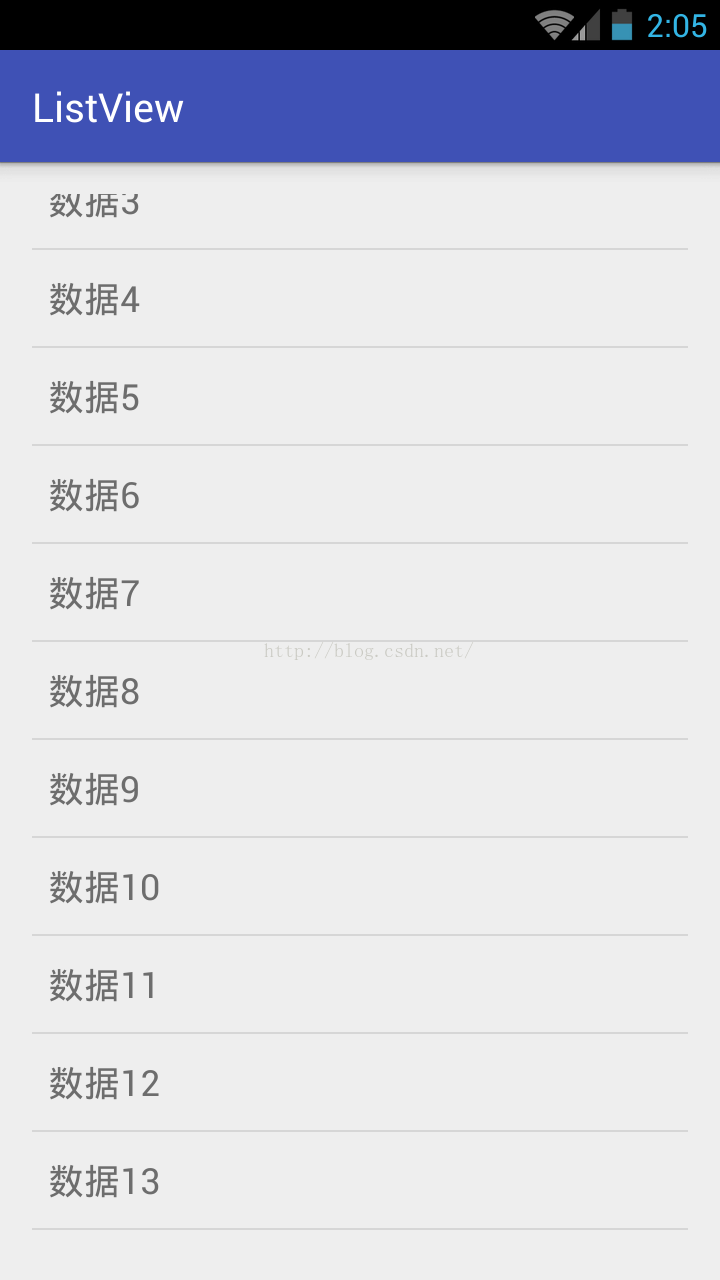編輯:關於Android編程
實現多文件的上傳,基於標准的http來實現。
1.多文件上傳MyUploader類的實現:
/**
*
* 同步上傳多個文件
* 基於標准的http實現,需要在非UI線程中調用,以免阻塞UI。
*
*/
public class MyUploader {
private static final String TAG = "MyUploader";
// ////////////////////同步上傳多個文件/////////
/**
* 同步上傳File
*
* @param Url
* @param fullFileName
* : 全路徑,ex. /sdcard/f/yh.jpg
* @param fileName
* : file name, ex. yh.jpg
* @return 服務器的響應結果(字符串形式)
*/
public String MyUploadMultiFileSync(String Url,
List<String> fileList, Map<String, String> params) {
String reulstCode = "";
String end = "\r\n";
String twoHyphens = "--";
String boundary = "--------boundary";
try {
URL url = new URL(actionUrl);
HttpURLConnection con = (HttpURLConnection) url.openConnection();
// 允許Input、Output,不使用Cache
con.setDoInput(true);
con.setDoOutput(true);
con.setUseCaches(false);
// 設置傳送的method=POST
con.setRequestMethod("POST");
// setRequestProperty
con.setRequestProperty("Connection", "Keep-Alive");
con.setRequestProperty("Charset", "UTF-8");
// con.setRequestProperty("Content-Type",
// "application/x-www-form-urlencoded");
con.setRequestProperty("Content-Type",
"multipart/form-data;boundary=" + boundary);
StringBuffer s = new StringBuffer();
// 設置DataOutputStream
DataOutputStream dos = new DataOutputStream(con.getOutputStream());
for (int i = 0; i < fileList.size(); i++) {
String filePath = fileList.get(i);
int endFileIndex = filePath.lastIndexOf("/");
String fileName = filePath.substring(endFileIndex + 1);
Log.i(TAG, "filename= " + fileName);
// set 頭部
StringBuilder sb = new StringBuilder();
sb.append(twoHyphens);
sb.append(boundary);
sb.append(end);
sb.append("Content-Disposition: form-data; ");
sb.append("name=" + "\"" + "upload_file" +i + "\"");
sb.append(";filename=");
sb.append("\"" + fileName + "\"");
sb.append(end);
sb.append("Content-Type: ");
sb.append("image/jpeg");
sb.append(end);
sb.append(end);
// 1. write sb
dos.writeBytes(sb.toString());
// 取得文件的FileInputStream
FileInputStream fis = new FileInputStream(filePath);
// 設置每次寫入1024bytes
int bufferSize = 1024;
byte[] buffer = new byte[bufferSize];
int length = -1;
// 從文件讀取數據至緩沖區
while ((length = fis.read(buffer)) != -1) {
dos.write(buffer, 0, length);
}
dos.writeBytes(end);
fis.close();
dos.writeBytes(end);
dos.writeBytes(end);
//dos.writeBytes(end);
//dos.flush();
// close streams
//fis.close();
}
// set 尾部
StringBuilder sb2 = new StringBuilder();
if (params != null && !params.isEmpty()) {
for (String key : params.keySet()) {
String value = params.get(key);
sb2.append(twoHyphens);
sb2.append(boundary);
sb2.append(end);
sb2.append("Content-Disposition: form-data; ");
sb2.append("name=" + "\"");
sb2.append(key + "\"");
sb2.append(end);
sb2.append(end);
sb2.append(value);
sb2.append(end);
}
}
sb2.append(twoHyphens + boundary + end);
dos.writeBytes(sb2.toString());
dos.flush();
Log.i(TAG, "sb2:" + sb2.toString());
// 取得Response內容
InputStream is = con.getInputStream();
int ch;
StringBuffer b = new StringBuffer();
while ((ch = is.read()) != -1) {
b.append((char) ch);
}
reulstCode = b.toString().trim();
// 關閉
dos.close();
} catch (IOException e) {
Log.i(TAG, "IOException: " + e);
e.printStackTrace();
}
return reulstCode;
}
}
2. 調用方法:
由於MyUploader的MyUploadMultiFileSync本身是同步的函數請求,所以,這個函數需要在非UI線程中執行。本例采用Thread+Handler的方式來進行說明。
下面是activity的主要代碼,功能是將cache目錄中的的jpg文件上傳到指定的服務器:
public void uploadThreadTest() {
new Thread(new Runnable() {
@Override
public void run() {
try {
upload();
} catch (Exception e) {
e.printStackTrace();
}
}
}).start();
}
private void upload() {
String url = "https://httpbin.org/post";
List<String> fileList = getCacheFiles();
if (fileList == null) {
myHandler.sendEmptyMessage(-1);
}else {
MyUploader myUpload = new MyUploader();
//同步請求,直接返回結果,根據結果來判斷是否成功。
String reulstCode = myUpload.MyUploadMultiFileSync(url, fileList, null);
Log.i(TAG, "upload reulstCode: " + reulstCode);
myHandler.sendEmptyMessage(0);
}
}
private List<String> getCacheFiles() {
List<String> fileList = new ArrayList<String>();
File catchPath = mContext.getCacheDir();
if (catchPath!=null && catchPath.isDirectory()) {
File[] files = catchPath.listFiles();
if (files == null || files.length<1) {
return null;
}
for (int i = 0; i < files.length; i++) {
if (files[i].isFile() && files[i].getAbsolutePath().endsWith(".jpg")) {
fileList.add(files[i].getAbsolutePath());
}
}
return fileList;
}
return null;
}
////////////handler/////
private Handler myHandler = new Handler() {
@Override
public void handleMessage(Message msg) {
Log.i(TAG,"handleMessage msg===" + msg);
if (msg.what == -1) {
Toast.makeText(mContext, "not find file!", Toast.LENGTH_LONG).show();
return;
}else {
Toast.makeText(mContext, "upload success!", Toast.LENGTH_LONG).show();
}
}
};
3 項目demo代碼地址:https://github.com/ranke/HttpAsyncTest
以上就是本文的全部內容,希望對大家的學習有所幫助,也希望大家多多支持本站。
 Android安全攻防戰,反編譯與混淆技術完全解析(上)
Android安全攻防戰,反編譯與混淆技術完全解析(上)
之前一直有猶豫過要不要寫這篇文章,畢竟去反編譯人家的程序並不是什麼值得驕傲的事情。不過單純從技術角度上來講,掌握反編譯功能確實是一項非常有用的技能,可能平常不太會用得到,
 Android放大鏡的實現代碼
Android放大鏡的實現代碼
快三個月了沒寫博客了,因為工作調動,很多經驗、心得都沒有時間記錄下來。現在時間稍微充裕了點,我會盡量抽時間將之前想寫而沒寫的東西補上。進入正題。去年某個時候,我偶然看到一
 Android Composite(ListView)詳解
Android Composite(ListView)詳解
目錄:1.ListView概述2.ListView使用中的重要角色(Adapter,ViewHolder,數據集,布局)3.ListView常用屬性4.ListView+
 簡單好用的PHP分頁類
簡單好用的PHP分頁類
本文為大家分享了兩段PHP分頁類,很實用,供大家參考,具體內容如下<?php class Page { private $total; //總記錄